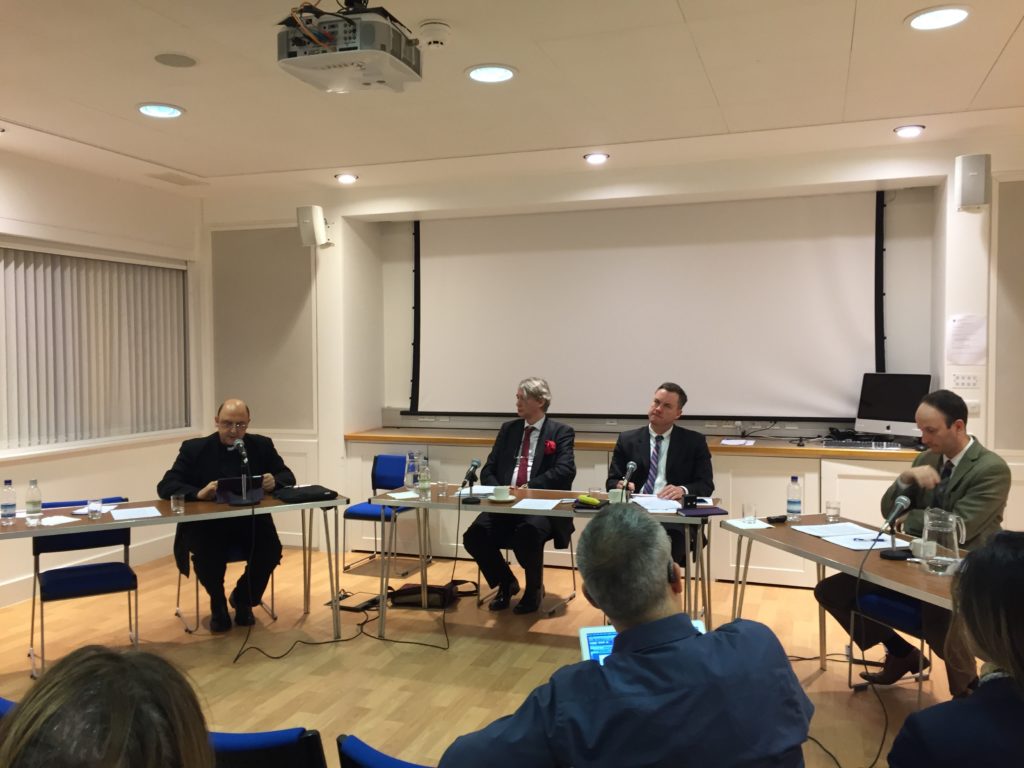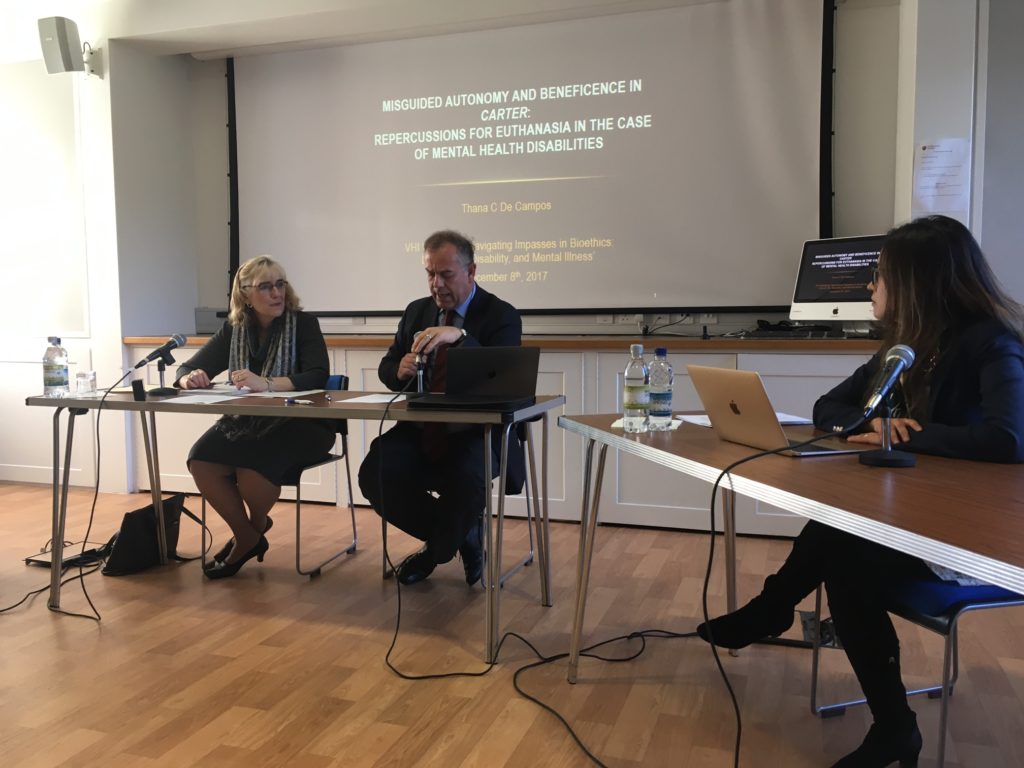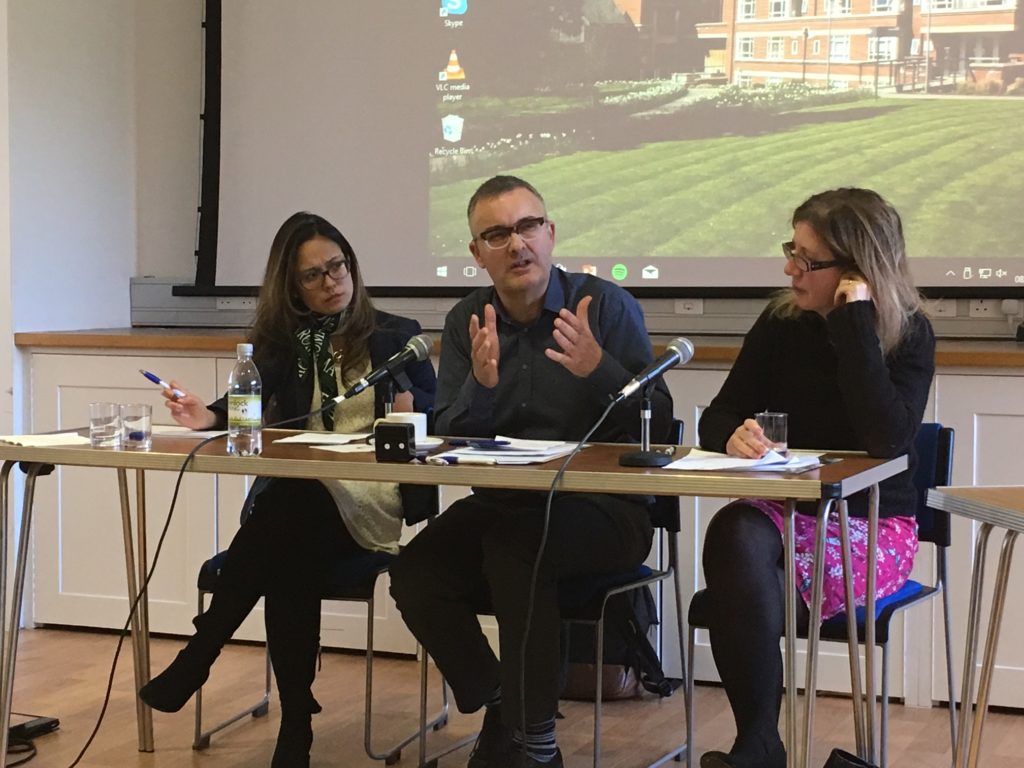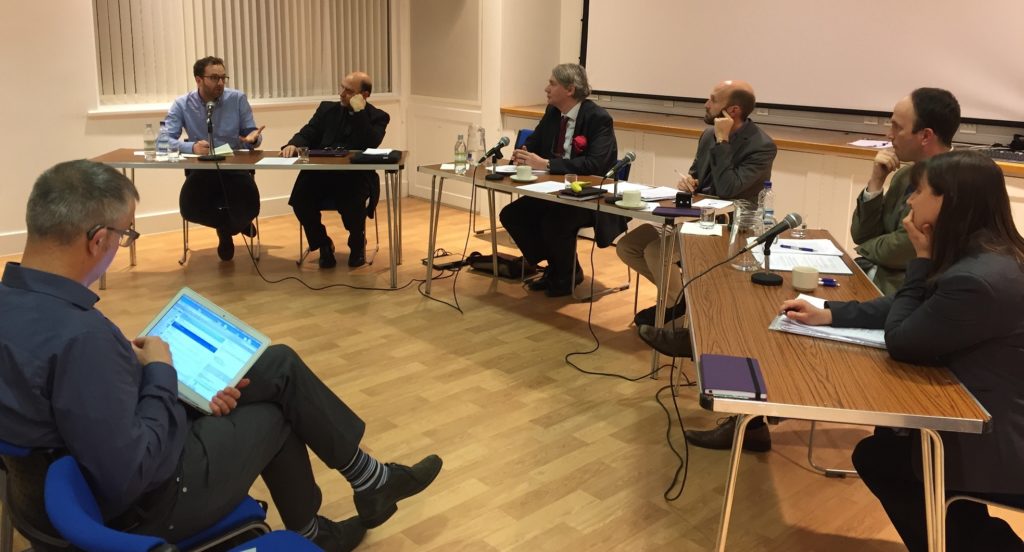Apr 12, 2019 | News
by P. Sameer Advani – Jose Mathew
The Vatican’s cricket team, founded in 2014, is made
up of priests and seminarians who study and work in Rome and is affiliated with
the Pontifical Council for Culture and Sport of the Vatican under Cardinal
Gianfranco Ravasi. Team members come from India, Sri Lanka, Pakistan, Canada,
Australia and Ireland. Fr. Eamonn O’Higgins, LC and P. Sameer Advani, LC, both
professors of philosophy at the Pontifical Athenaeum Regina Apostolorum, are
the managers of the team, and several of his players study in Regina
Apostolorum and are formed in the Pontifical College Maria Mater Ecclesiae. The
team has various objectives: to promote interreligious, ecumenical and
intercultural dialogue, to increase awareness of the importance of religion for
society, to address important social issues such as slavery and immigration,
and to promote the spread of the Christian Gospel through cricket. Cricket
matches therefore serve as platforms for bringing together different religious,
social, and cultural communities and promoting what Pope Francis has called the
“culture of dialogue”. The team then tries to engage and challenge
leaders in the areas of religion, sports, media, and culture to work together
for the common good. “We created the team because, although football is
very popular in the traditionally Christian countries of Europe and South
America, nothing could be compared to the popularity of cricket in Southeast
Asia, which is predominantly Hindu and Muslim,” says P. Sameer. “Our
idea is to use a language that we have in common with these groups and
religions – the language of cricket – to start a dialogue with them.”
Most
of our cultural tensions come because we don’t know each other. Ignorance is
the source of almost all fundamentalisms, and cricket is a simple way to begin
the process of true dialogue and friendship that lays the human foundations
necessary for evangelization. No less important for Fr. Eamonn is the example
of the Catholic priesthood and of the Catholic Church that is transmitted in
this way. “We have so many stories in today’s press on the sins and
failures of priests,” he says, “but to see 15 young seminarians,
happy, who love their vocation and eager to serve the church, give much hope
for the future and transmit a positive image that touches the hearts of many
people.” Finally, concludes P. Sameer, “the dialogue between public
reason and the rich heritage and accumulated wisdom of religious traditions is
the key to building a society that truly respects man and seeks his good, and
in a small way but importantly, we want to contribute to this essential task.”
As a means to achieve these goals, the team played several high-profile games
in its brief history, engaging in five“Light
of Faith Tours.”In 2014, 2016, and 2018 they toured
England playing matches against Anglican, Muslim, Jewish and Hindu-Sikh teams
in some of the country’s most iconic locations: Lords in London, Headingly in
York, Edgbaston in Birmingham, and Kent Spitfire Ground. The team also played
against His Majesty Queen Elizabeth’s The Royal Household Cricket Club at
Windsor Castle twice, and in 2018 they launched the Commonwealth Cup and Peace
at the Crease initiative with Baroness Patricia Scotland, the Secretary General
for the Commonwealth.
In
2017, the team traveled to Portugal and played against Muslim, Hindu, and
Jewish teams in preparation for Pope Francis’ trip to the country for the 100th
anniversary of the Fatima apparitions, and in 2018 they visited Buenos Aires,
Argentina. Furthermore, they have played games against the Cricket Without
Borders program that wants to help young people in poor neighborhoods through
cricket. “Pope Benedict has often said that the essence of Christianity is
a personal encounter with God,” concludes Fr. Sameer. “Through
cricket, and in a simple but real way, I think we have helped many people,
Christians and non-Christians, to meet again, in a deeper way, with God. The
transformation and evangelization of culture are achieved in this way– when
people have been touched by God– and it’s incredible to see and participate in
a project like a Vatican cricket team that God has and continues to use to get
closer to us.”
Mar 12, 2019 | News
By Giulia Bovassi
Encouraged by the words
that the Holy Father, in Humana Communitas,
dedicated in memory of the twenty-fifth anniversary of the Pontifical Academy for
Life, also accompanied by the operative reality of Dr. Federica Ebau, we are
called again in this research session to ask ourselves how to conserve humanity
within the context of technical innovation.
Last January 25th, the Interdisciplinary
Research Group on Neurobioethics, in cooperation with the UNESCO Chair in
Bioethics and Human Rights and the Science and Faith Institute, hosted Federica
Ebau, Product Specialist of Progettiamo Autonomia Robotics SRL, in order to
reflect on the role of robotics in rehabilitation, a speech – as suggested by
Claudio Bonito during his introduction – which could be synthetically defined
as a conversation about the responsible use of robotic development. Precisely
inasmuch as it is a graft between flesh and artifice, an external habit, robotics
cannot disregard proper ethical investigations around the approximation between
thinking reality and mechanized reality. An ambivalent combination of euphoria
and fear, both settled over the uncomfortable session of the techno-scientific
paradox.
Using exactly the term
“paradox”, Pope Francis, in the letter mentioned above, presses on
the anguish experienced by peoples in the era of scientific excellence. History,
indeed the very birth of bioethics, marks the continual warning to tirelessly illuminate
the action of the human being, therefore moral action, so that it can act as an
indispensable glue between specialized studies and the true good for the
“mankind’s care,” where the fundamental rights of every member of the
human species, the dignity recognized to them and the responsibility towards
the common good are contained. Transversely the commitment of international
organizations such as the UNESCO Chair in Bioethics and Human Rights, which has
the specific purpose of effectively feeding the solidity of common roots, in
order to realize what the Holy Father has also recalled: a “global
bioethics”.
Clinical practices,
such as the professional experience presented by Ebau, concretize the proposed
theorization. Robotics – the preferential research field of the speaker – is
not only decisive for national and international territories, but rather a real
investment material of the contemporary era, and there are three areas in which
robotics will be massively involved: the military one, the hospital one and the
industrial one. In the rehabilitation context, the patient – generally a paraplegic
person – experiences a complex clinical process compared to able-bodied people,
but also because these patients lead a life that is mostly active, domestic, athletic
or lively working with an enormous therapeutic and rehabilitative need to
combat sedentariness. The previous testimony of Carmine had already made us
realize the importance of enormous accomplishments produced by self-esteem,
willpower and fighting spirit; in the same way Ebau confirms the positive change
in her patients and the centrality, in comparison with the machine, of adopting
the existential perspective. “A boy in a wheelchair, with no sensitivity
from the chest down, feels nothing. His perception of space is very different
from ours; he feels like a tightrope walker hanging in the middle of nowhere”:
for this reason the impact with the exoskeleton and therefore the adventure
towards a change of dimension, from the bottom to the top, is a delicate point
in the relational experience and, in this sense, has been interesting to hear
the technique put in place by the doctor, proposing to the patient his own
image through a mirror, a method of joining two images of the same person.
Once again we are
witnesses that the real conflict between artifice and human being refers to
personal identity, to the question about the self.
Mar 12, 2019 | News
By Giulia Bovassi
Addressing the issue of robotics is now a need that cannot be postponed,
particularly in recent times, since a rapid acceleration forced this close face-to-face
between robotics and human reality. The technical examination offered by the
experts conceptually prepares for the personal testimony of Carmine Consalvi.
This third
afternoon, dedicated to the interaction between different forms of specialized
knowledge, brought the theory into praxis, not only through the interventions
of Giovanni Morone and his colleague, Marco Iosa, but also through the autobiographical
note of the young Carmine Consalvi, 31 years, whose history is linked to the
exoskeleton application in rehabilitation. As a patient, Carmine brought an
important fact back to the heart of the research so far conducted, easily to
get lost when you enter conceptually into the bioethical issues, namely the
human being. Claudio Bonito, member of the GdN and coordinator of the research
subgroup on “Posthumanism”, introducing this last intervention as the
conclusion of the afternoon session, contrasted the “to do” with the “to act”:
the action framework is working on new moving realities. That Vitruvian man,
from whom humanism took inspiration for years, is challenged by the external
act, a product of man, the artifice of the creative mind, which runs the risk
of reductively exhausting himself in himself, concealing the ultimate
destination of a “to do” that makes itself “to act.” Empathy takes over. Carmine
shared the following: the invention rushed in my aid by physically,
psychologically and humanly giving me new forces, driven by the determination
arose in succeeding ex novo to relate myself with someone looking into his
eyes, which, backward, the view of the wheelchair, from the bottom towards the
other, failed. Six years ago, the road accident: a trauma that drastically
influenced his life and his habits causing him the lack of voluntary residual
movements, removing the complete control of the trunk; aspects to which Carmine
felt called in a physical and existential rehabilitative response. After
learning about the exoskeleton, he decided to try it, firstly to test whether
innovation was ready for him. The patient’s feedback lies on the adaptability
of the robot to its psychological, as well as physical, predisposition. The
device is applied when you let it; in this sense, Carmine spoke of a
subjective, non-standardized reaction to this type of technology, where a
non-marginal role in his case was played by constancy and willpower.
A closure
which is in line with the opening of the seminar conducted by Morone, “The
right robot for the right person at the right time: state of the art, future
perspectives on the use of robots in neuro-rehabilitation,” which
accompanied the reflection through the work done at the IRCCS Santa Lucia,
where they deal with new technologies used in neuro-rehabilitation. Complex applications
under multiple points of view, from the costs to the much longer rehabilitation
times, up to the same effectiveness; factors assumed by a part of experts and
researchers with extreme skepticism and, by the other part, with excessive
optimism, two ways which made the relationship between therapy and technology
not always linear – as explained by the professor. Then the fundamental
question reiterated by. Morone, pervasive in all the neuro-rehabilitative
practice, is: “in the moment when we have to push the neuro-plastic capacity to
its maximum for recovery, functionality and ability, during the hospitalization
(especially in patients suffering from stroke), did it provide a sufficient stimulus
for the patients to their recover?” Here then returns the example embodied by
Carmine himself, although with different clinical situations: to know which
patients can benefit from therapeutic robotics, so from a generic question “is
this robot generally effective?” to “for whom this robot is effective?” We need
to change the question because the focus has changed. Within their research
group, a team of specialists during about ten years of observation, noted how
the resistance was massively sedimented in people psychologically proven by
states of anxiety or stress, emotionally disturbed by the robotic element. By looking
for a propulsive force in brain plasticity we learn first that there cannot be “any
patient” for “any robot,” so that the neuro-rehabilitation principles
can be facilitated or increased thanks to the robotic supplement.
Marco Iosa
spoke on “The ethics of rehabilitation robots. The three laws of
neuro-robotics”, with clear reference to I. Asimov, as the Three Laws of Robotics
and to its explanatory filmography, such as “I, Robot.” Robots are
designed for three types of work: the dirty one, the boring one and the
dangerous one. In the case of rehabilitation or, generically, in medicine,
there is a need for adaptability with what the patient wants to do or feels he
can do, following a procedure that is very different from what is normally
followed by pharmacovigilance. Thus, we could outline three modern laws of
robotics in the health field:
1) a robot for neuro-rehabilitation
may not injure a patient or allow a patient to come to harm;
2) a robot must obey the orders
given it by the therapists, provided that such orders do not contravene the
First Law;
3) a robot must adapt its
functioning to the patient’s abilities in a transparent way as long as this
does not conflict with the First or Second Laws.
This
structure is affected by the difficulty of the “Paradox of efficacy”,
i.e. how to benefit from a proven effectiveness-risk criterion. The resolution
is obtained changing the request, that is asking for whom it is effective (as
already said, the anxious subject, if called to choose between robot and
physiotherapist, opts for the latter). The professor noted, “the robot is
like the invention of the machine; it answers the question: “what can you not
do for the patient?” We thus tread on the limit not only between effectiveness
and risk, but between therapeutic and enhancement, highlighted by the
performance accomplished with cerebral, electrical or magnetic stimulation. What
purpose and what distinction is made between what is therapeutically beneficial
and what an enhancement? What is the distinction between treatments to provide
for learning or athletic difficulties, emotional or traumatic management in the
military field, etc.? Countless examples for a single ethical macro-question: is
all that is technically possible also morally licit?




